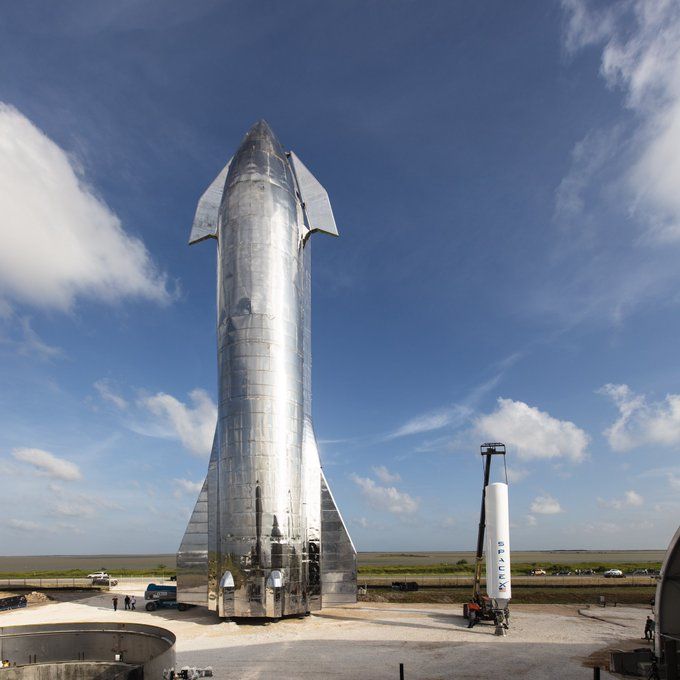SpaceX has formally unveiled the massive retro-looking spacecraft it intends to use for interplanetary flights and CEO Elon Musk says it could be doing earth orbit flights within six months. The Starship is made of stainless steel, stands 164 feet tall and is 30 feet in diameter and that’s just the spacecraft. The massive booster needed to lift it will be more than 200 feet tall and be able to push 220,000 pounds into space. Front and rear fins give it a retro-futuristic look and Musk said this week it will not only allow manned flights to Mars, it will sharply reduce the cost of that kind of flight because the vehicle can be reused multiple times. But while the Mars potential captures most of the attention, Musk is also considering uses much closer to home, according to The New York Times.
For instance, a single Starship could deploy about 400 of Musk’s Starlink satellites, small satellites used for beaming internet services to earth. Perhaps the most intriguing potential use is as a hypersonic airliner, capable of taking passengers anywhere on earth in 30 minutes or less. “It’s basically an ICBM that lands,” Mr. Musk said. “Nothing gets there faster than a ICBM. It’s just minus the nuclear bomb and add landing.” Musk said the company has the money to do orbital testing and perhaps “a loop around the moon” but he’ll need to raise money for a moon landing or a trip to Mars.




































This particular airframe and 2 or 3 to follow will be for suborbital testing only. Ship 4 or 5 will be the first to reach orbit, and then only once they’ve built a booster as well. Which they expect to accomplish all before the end of 2020!
Darn … Buster Crabbe had it right all along!
And what about the heating of reentry?
Ceramic tiles and a low-peak-heating-reentry a-la the space shuttle. SpaceX claims their design is cheaper to manufacture and more resilient than what we had in the 80s. That’s still to be seen, the early prototypes won’t have them as they’ll be flying suborbital initially.
That plus the use of 301 stainless means very high temperature tolerance and thus less need for aggressive heat shielding compared to if they had used aluminum or Al-Li.
It’s crazy, but it could be so crazy that it just might work. Either way, at least *someone* is doing aspirational things in space compared to what NASA’s done post-Apollo.
I attended ALL of the Burt Rutan talks at Airventure 2019. He doesn’t have anything good to say about NASA … just as you say. How they got to the moon in 1969 with a four-function calculator defies logic. For years, I operated out of Mojave, CA; to see the machines that’d pop out of the Scaled hangar, et al, there was jaw dropping. Meanwhile, NASA is spending millions to hang electric motors on an airplane and building a stiletto looking thing to re-do research that’s already been done. Swell.